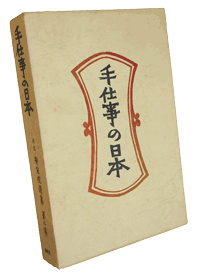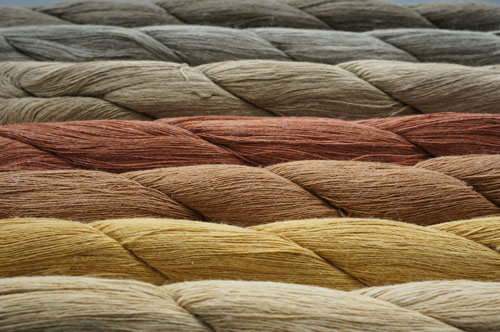From Washi, Kami-ito to Shifu 和紙そして紙糸から紙布に

Craft Page

Initially the book, "Te-shigoto no Nihon" (Handicraft in Japan), was published in 1948 but it had encountered out-of-print and reprinted in limited numbers. The book that above photograph was published in 1972 as the second volume of the newly bounded Muneyoshi (Soetsu) Yanagi Selection.
In the book, the situation of handicrafts around 1940's in Japan is written. It's different scenery from today's Japan that the industrial products are everywhere. It was an era when we could still meet many beautiful handicrafts such as pottery, dyed and woven fabrics, metalware, lacquerware, wooden, bamboo, leather, paper and local crafts wherever we went in Japan.
Despite the dramatic changes in our lives that followed, there are still some handicrafts remained that we are proud of. Washi (Japanese Handmade Paper) is one of them.
In 2014, UNESCO designated three washi making communities as Intangble Cultural Heritage of Humanity. Those communities make beautiful washi with inherited their techniques as hon-mino-shi, Hosokawa-shi and Sekisyu-banshi. In the book, Sekisyu-banshi is described as「It really feels like "kigami", and the characteristics of washi is oozing out」. All the people living in the communities take pride in their tradition of Washi-making and regard it as the symbol of their cultural identity.
Natural dye on kami-ito

Muneyoshi Yanagi often mentioned the beauty of natural dyes in his books. He trusted that take time and effort to make thread and dyeing with natural dyes are the ultimate in handicrafts.
The photo is the examples of kami-ito dyed with a natural dyes. Kami-ito is durable and can be over-dyed to make a wide range of colours. So you can try your own natural dyes on kami-ito and get your favorite colours.

A friend told me that the New York Times had an article about pink colour dyed with avocado. That's right! It's an avocado, we eat. It has green / dark colour skin and a large pit inside.
So, the natural dye I recently tried was avocado pits. There are silk thread (thicker skein) and kami-ito (thinner skein) dyed with aluminum and iron mordants. Beautiful pink and gray colour came out.